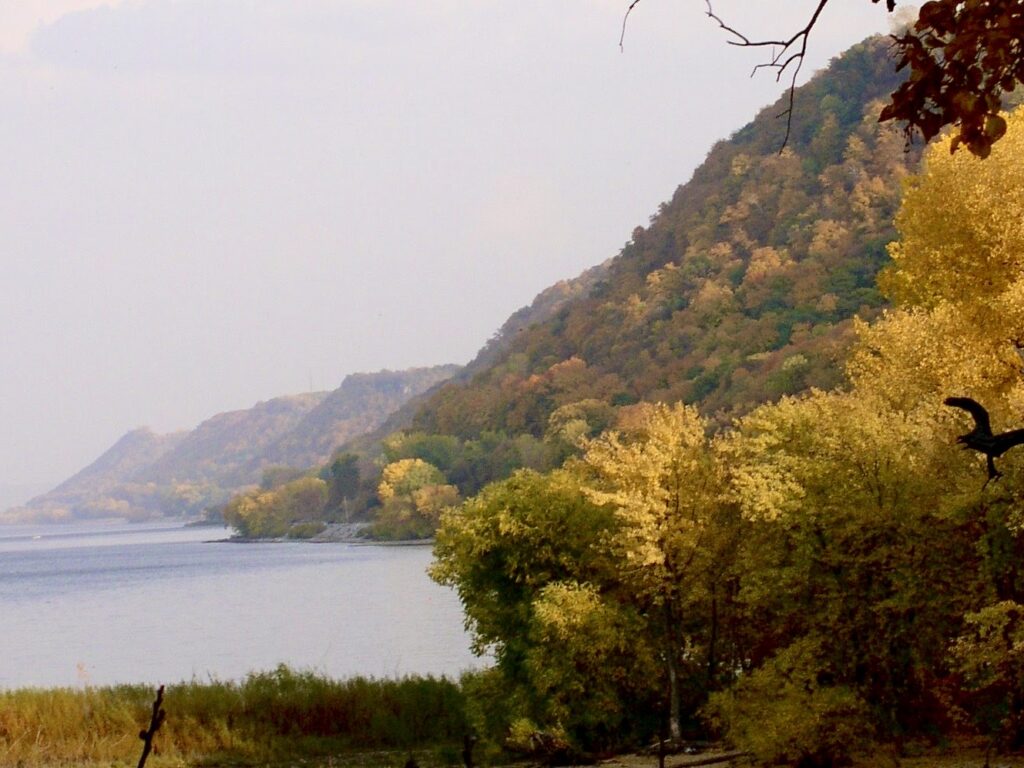This Ancient Area We Call Home

We live in an area unlike any other on Earth.
You’ve seen the majestic bluffs. You’ve seen the crazy rock formations around Wisconsin Dells and may have toured an underground cave. But do you really understand the significance of our home, the Driftless Area?
In case you don’t know (and many locals don’t), it’s the name of a 24,000-square-mile area that includes parts of Minnesota, Wisconsin, Iowa and Illinois that did not get steamrolled by any of the last four glaciers that leveled much of the Upper Midwest. It’s “driftless” because it contains none of the drift (sand, gravel, silt, boulders) that glaciers deposit.
That may not sound like a big deal, but it really is. Because this area was not destroyed, it is a living history of what the area was like before the glaciers. The exposed layers of rock in the steep bluffs show that the area was part of a subtropical ocean about 450 million years ago that covered the entire northern hemisphere.
The layers include fossilized creatures that lived in that ocean such as gastropods. They are not hard to find. These sea creatures are part of the shale on our rural roads. The sand mining in the area is evidence of the vast amount of sandstone.
I was in elementary school when I first tried to understand the description of the area on the plaque at the lookout on Memorial Park. When I was told that melt water started eroding the landscape at the height we were and that the Mississippi River was 200-300 feet deeper than now, I was amazed. But then I was told that the glaciers themselves were as much as a mile higher than we were. Wait, what?
The internet is loaded with details of the Driftless Area and it can be confusing. For example, there are many maps of the area which don’t seem to agree on its boundaries. (Isn’t one entrance into it just as you drive down from Munson Hill on Highway 61 west of Red Wing?) Historical dates for the area are often estimates which is to be expected when talking about thousands and millions of years.
But I got the most real feel for the area’s significance from Decoding the Driftless, an award-winning documentary by Sustainable Driftless, Inc. in La Crosse, Wisconsin. It reveals the origins, diversity and resources of the region. It’s worth watching just for the views which include many taken from aircraft and drones.
The biologists and geologists in the documentary present the viewer with interesting facts and discoveries that even locals might be unaware of. It was funny to watch the excitement of the Swedish narrator each time he discovered another unique thing about the area. Who knew?
There are many theories about its size and history and why the area was missed by glaciers. What we see is the result of the last glacier 11,000 years ago but we know of four for sure and there were likely many more before that over the past 2.5 million years, all of which missed the area. The documentary includes an animated view of how the last four glaciers missed the area and what might have steered them around it.
Geologists have studied this area from all angles, including underground where there are miles of interconnected tunnels created by water dissolving limestone. It’s known as karst geology which is fractured, porous rock such as limestone.
The Mississippi River cuts right through the middle of the Driftless Area for 240 miles, increasing its volume of water from the many rivers and streams emptying into it and creating backwater sloughs and a major flyway for migratory birds.
Amazingly, all the bluffs are the same height. The valleys are carved out by erosion. Native Americans considered many locations to be sacred including He Mni Can (Barn Bluff) in Red Wing.
This sculpted area has many unique features that make it a huge tourist draw. The vistas from the bluff tops are breathtaking. Its microclimates allow rare flora and fauna to survive here. Many of the streams are fed from underground springs at 47 degrees, the mean average air temperature for this area. This is perfect for the native brook trout which thrive here. The area has the highest density of cold water streams in the world.
Another discovery is that there are vents in some bluff tops that allow water to flow in. That water reaches an area called an ice cave where it freezes and stays frozen all year. Those caves are vented out the side of the bluff. The documentary showed that warm summertime air flowing into the bluff top vent exited the side vent at a temperature near 20 degrees.
Sinkholes dot the landscape. They are entrances to underground tunnels. If you drive through the Driftless Area and see small clusters of trees in the countryside, they might indicate sinkholes. Fountain, Minnesota claims to be the sinkhole capital of the world. These underground tunnels are extensive. At least 17 miles of tunnels have been mapped in Iowa – so far. Some caves in the area can be toured.
There’s more to be discovered and someday a glacier may again challenge the area.
Until then, the Driftless Area will be our own little universe hidden in plain sight. Get out and enjoy it.